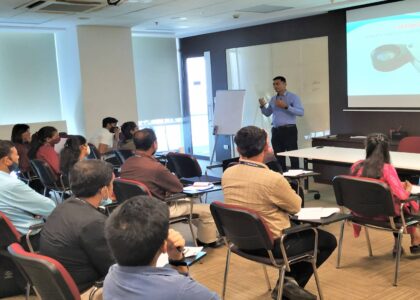Introduction
Planning a traditional South Indian wedding is a vibrant journey through an array of time-honored customs and ceremonies that reflect the rich cultural tapestry of the region. From the intricate rituals and symbolic practices to the elaborate celebrations filled with music, dance, and sumptuous feasts, each element plays a vital role in honoring the couple’s heritage and family traditions. This comprehensive guide explores the fascinating traditions that characterize South Indian weddings, offering insights into the preparations, key ceremonies, and the profound significance behind each ritual. Whether you are a bride, groom, family member, or an enthusiast of cultural festivities, understanding these customs will enhance your appreciation for the beauty and depth of South Indian matrimonial celebrations.
Understanding South Indian Weddings
South Indian weddings are a vibrant tapestry of ancient traditions, rich cultural heritage, and intricate rituals that reflect the diversity of the region. Each community, whether Tamil, Telugu, Kannada, or Malayali, brings its own unique customs to the celebration, creating a multi-faceted experience. Typically spanning several days, the festivities begin with pre-wedding rituals such as the engagement (Nischayathartham) and the traditional bridal shower (Sumangali Prarthanai), where the bride-to-be is blessed by married women. The wedding day itself is marked by elaborate ceremonies like the Kashi Yatra, where the groom symbolically renounces worldly pursuits before being persuaded to marry, and the Mangalya Dharanam, where the groom ties the sacred Mangalsutra around the bride’s neck, signifying their union. Rituals are often conducted in Sanskrit and presided over by priests who chant Vedic hymns to invoke blessings. Traditional music and dance, sumptuous feasts featuring regional delicacies served on banana leaves, and the adornment of the bride and groom in silk attire and gold jewelry enhance the grandeur of the occasion. The post-wedding customs, such as the Grihapravesham, where the bride is welcomed into her new home, further underscore the familial bonds and the significance of community in South Indian weddings. This intricate blend of spirituality, joy, and familial duty encapsulates the essence of South Indian matrimonial ceremonies, making them a profound and unforgettable experience.
Pre-Wedding Rituals
Engagement (Nischitartham)
The engagement ceremony, known as Nischitartham, marks the formal agreement between the families. It’s a joyous occasion where horoscopes are matched, dates are fixed, and blessings are sought. This is often accompanied by the exchange of gifts, rings, and sweets, symbolizing the union of the two families.
Lagna Patrika
Following the engagement, the Lagna Patrika or wedding invitation is prepared. This isn’t just a physical invite but a formal announcement of the wedding details, including the auspicious date and time (muhurtam) determined by the family priest.
Traditional Shopping
In the run-up to the big day, there’s a flurry of traditional shopping. This includes purchasing saris, dhotis, jewelry, and various items needed for the ceremonies. Shopping itself is a festive activity, often done together by both families, symbolizing unity and shared joy.
Main Wedding Ceremonies
The Wedding Day (Muhurtam)
The wedding day, or Muhurtam, is the pinnacle of South Indian wedding celebrations. It’s the chosen auspicious time when the main ceremonies occur. This day is filled with rituals that vary by region but share the common goal of sanctifying the union.
Welcoming the Groom (Kashi Yatra)
One of the more entertaining rituals is the Kashi Yatra. The groom pretends to renounce worldly pleasures and head to Kashi (a holy city) to become a monk. He carries a walking stick and other symbolic items. The bride’s father must then persuade him to choose marriage over asceticism, humorously offering his daughter as a reason to stay.
Tying the Knot (Mangalya Dharanam)
The Mangalya Dharanam is a pivotal moment where the groom ties the mangalsutra (a sacred thread) around the bride’s neck. This signifies their marital bond. It’s accompanied by the chanting of Vedic hymns and the showering of rice and flowers, invoking blessings from the gods.
Seven Steps (Saptapadi)
The Saptapadi, or seven steps, is another crucial ritual where the couple takes seven steps around the sacred fire, each step signifying a marital vow. This binds them legally and spiritually, symbolizing their commitment to each other through life’s journey.
Post-Wedding Rituals
Reception
Post the wedding ceremony, a grand reception is usually held to introduce the newlyweds to the extended family and friends. This event is less formal and more about celebrating with music, dance, and a lavish feast.
Grihapravesham
Grihapravesham, or the homecoming ceremony, marks the bride’s entry into her new home. She is welcomed with aarti, and her entry is celebrated with rituals that signify her role in bringing prosperity and happiness to her new family.
Post-Wedding Games
To ease the bride into her new family, several fun post-wedding games are played. These are light-hearted activities aimed at fostering a bond between the bride and her in-laws, making her feel at home.
Cultural Significance
South Indian weddings are a vibrant tapestry of rituals and traditions, deeply rooted in the region’s rich cultural heritage. These ceremonies are not merely a union of two individuals but a grand celebration that intertwines family, community, and spirituality. The rituals, varying across Tamil, Telugu, Kannada, and Malayalam communities, often extend over several days, each segment brimming with symbolic acts meant to invoke blessings, prosperity, and happiness for the couple. Key elements include the exchange of garlands, the tying of the sacred thread or “Mangalsutra,” and the sacred fire or “Homam,” each carrying profound religious and cultural meanings. Music, dance, and elaborate decorations featuring traditional motifs and vibrant colors elevate the festivities, reflecting the joyous and communal spirit inherent in South Indian culture. The cuisine, served on banana leaves, showcases a diversity of regional flavors, emphasizing the importance of hospitality and the sharing of meals in communal bonds. Attire, particularly the bride’s silk saree and the groom’s traditional dhoti, often adorned with intricate gold jewelry, represents not only personal and familial wealth but also an adherence to cultural aesthetics and values. In essence, South Indian weddings are a celebration of life, legacy, and the timeless traditions that continue to define and unite communities across generations.
Traditional Attire and Jewellery
Bridal Attire
The South Indian bride is a vision of grace in her traditional attire. Typically, she wears a richly adorned silk sari, often in vibrant colors like red, gold, or green. The sari is complemented with intricate gold jewelry, including the maang tikka (forehead ornament), necklaces, earrings, and bangles.
Groom’s Attire
The groom, too, dons traditional attire, usually a silk dhoti and angavastram (a cloth draped over the shoulders). In some communities, he wears a turban or a special headpiece, adding to the regality of his appearance.
Cuisine and Feast
Sweets and Savouries
No South Indian wedding is complete without a sumptuous spread of sweets and savories. From the famous Mysore Pak to the delicious laddu, these treats are an integral part of the celebrations, symbolizing the sweetness of the union.
Traditional South Indian Meals
The wedding feast, often served on banana leaves, includes an array of traditional dishes like sambar, rasam, avial, and a variety of rice preparations. These meals reflect the rich culinary heritage and are a highlight of the wedding festivities.
Music and Dance
Classical Music
Classical music, particularly Carnatic, plays a significant role in South Indian weddings. Live performances of traditional songs and instrumental music add a divine ambiance to the ceremonies.
Folk Dances
In addition to classical music, folk dances like Bharatanatyam, Kuchipudi, and others bring an element of joy and celebration. These performances are a tribute to the cultural richness and add vibrancy to the festivities.
Conclusion
In conclusion, planning a traditional South Indian wedding involves a rich tapestry of customs and ceremonies that reflect the region’s deep cultural heritage. From the vibrant pre-wedding rituals to the sacred nuptial ceremonies and joyous post-wedding celebrations, each aspect is meticulously designed to honor family, tradition, and the sacred union of marriage. Embracing these practices not only ensures the preservation of age-old traditions but also fosters a profound sense of community and continuity. By understanding and incorporating these elements, couples can create a wedding experience that is both deeply meaningful and culturally resonant.












